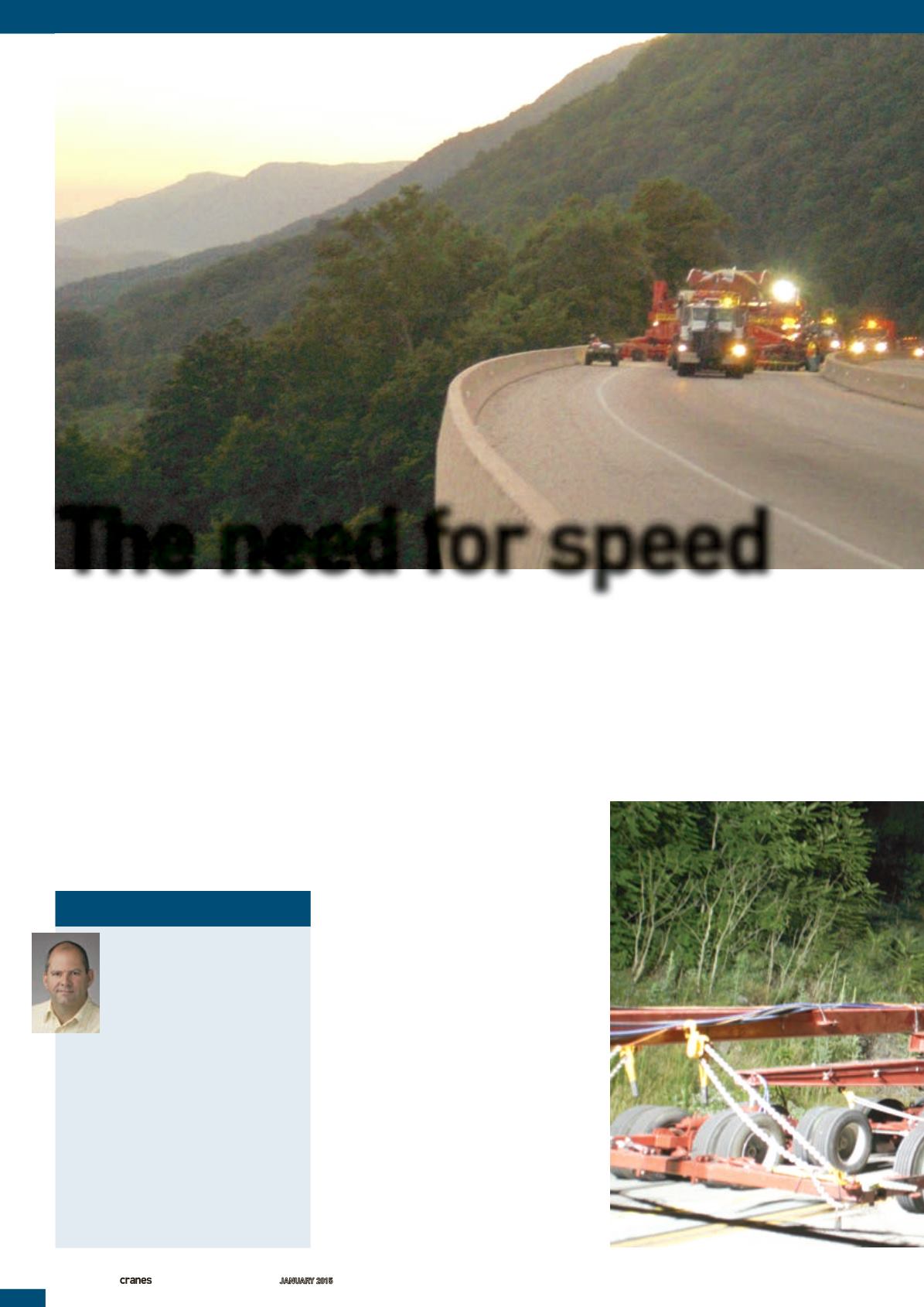
INTERNATIONAL
ANDSPECIALIZED TRANSPORT
■
JANUARY 2015
36
Whether that speed is 5km/hr (3.1mph)
or 50km/hr (31mph) it requires power
to reach that speed. Similarly, besides
getting the transport combination to roll,
theremaybe an incline on the route.
Negotiating an incline also requires power.
It is therefore clear that having
sufficient power to getmovingdoes not
necessarilymean that there is sufficient
power to complete the transport.
Sohowdowedetermine the real
requiredpower to complete a transport
from start to finish?To answer this
questionwe first have to answer twoother
questions as follows:
1. What is themaximum incline during
the route?
2. What is themaximum transport speed
and how quickly dowewant to reach
that speed?
The answer toquestionone is easily
found, as this is the result of a route
survey.A route survey is the foundation
of everyheavy transport.Not only for the
maximum incline in the route, but also
for turning radii, obstructions during the
transport and traffic flow, toname just a
few. In this casewe assume amaximum
inclineof 3%.
The secondquestion is a bit trickier
to answer. Given the existing transport
combination, on a straight, flat and
paved road, how fastwould youwant the
transport to go? For the sake of this article
wewant the transport to travel at 15km/h
(9.3mph). Also, wewant tobe able to
reach this speedof 15km/h in30 seconds
andmaintain this speeduntil there is a
need todecrease it. Last but not least, we
want tobe able to go from0 to15km/h
in30 seconds evenwhen travellingup the
maximum incline of 3%.
Below is a summaryof thedata from
the truck thatwe analysed lastmonth:
T
heneed for speed is abit of a strange
title for an article related toheavy
transport, as this industrygenerally
maintains low speeds. In linewith last
month’s article, however, inwhich the
engine’s powerwas translated into a
tractive force andultimately into a rimpull
force, part of the engine’s power isneeded
to speedup the transport combination.
The engine’s power is first used to get
a combination truckwith counterweight
plus transporterwith cargo, from a
stand still situation to a rolling situation.
Once the combination is rolling, ideally
youwant to increase to a certain speed.
ABOUTTHEAUTHOR
Marco van Daal has been in
the heavy lift and transport
industry since 1993. He started
at Mammoet Transport from the
Netherlands and later with Fagioli
PSC from Italy, both leading
companies in the industry. His 20-year
plus experience extends to five continents
andmore than 55 countries. It resulted
in a book The Art of Heavy Transport,
available at:
transport/
Van Daal has a real passion for sharing
knowledge and experience – the primary
reason for the seminars he holds around
theworld.
Theneed forspeed
Inhis regular feature, thismonthMARCO
VANDAALdiscusseshow todetermine
power requirements for road transport
THEKNOWLEDGE
Figure2


